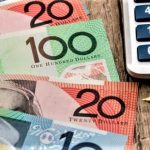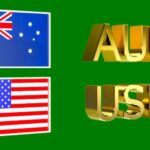Gold (XAUUSD) trimmed part of its modest intraday losses on Wednesday, stabilizing just below the highest level since mid-June. Despite dipping earlier in the day, the yellow metal remained well-supported by lingering concerns over the US Federal Reserve’s rate path and fresh doubts surrounding its institutional independence. Meanwhile, a positive risk tone driven by global trade optimism and a slight US Dollar recovery capped additional upside in gold prices.
Traders appear cautious in heavily shorting gold, given the conflicting cross-currents in the macroeconomic landscape—ranging from central bank speculation to geopolitical unease and evolving trade dynamics. As of Wednesday’s European session, the yellow metal continues to consolidate near its recent highs, awaiting stronger directional cues.
Gold Eases After Asian Rally but Holds Ground Near June Highs.
Gold prices initially surged during the Asian session, reaching levels not seen since June 16, but retreated slightly as European trading began. A combination of factors triggered the pullback:
A modest rebound in the US Dollar from two-week lows
Positive sentiment following a US-Japan trade agreement
A slight reduction in safe-haven demand as equities rallied
However, despite the early dip, selling pressure lacked conviction. This resilience suggests that market participants remain reluctant to abandon gold amid monetary policy uncertainty and growing concerns about the Federal Reserve’s autonomy.
US-Japan Trade Deal Lifts Sentiment but Limits Gold Upside.
Markets welcomed news that President Donald Trump had concluded a trade agreement with Japan, imposing 15% reciprocal tariffs and securing Japanese market access for several US exports, including cars, rice, and agricultural goods. This triggered a fresh risk-on wave, boosting equities globally and dampening appetite for safe-haven assets like gold.
Nevertheless, gold’s dip was shallow and short-lived. Investors remain wary of potential spillover effects from the trade deal, including possible escalations with China or retaliatory measures from other trading partners. More importantly, uncertainty over the global tariff landscape continues to weigh on investor confidence, keeping gold’s appeal intact.
Fed Policy Path: Clouded Outlook Offers Tailwind for XAUUSD
The most significant factor supporting gold remains the uncertainty around the Federal Reserve’s rate cut trajectory. Several conflicting developments have kept traders on edge:
President Trump continues to pressure the Fed for lower interest rates
Trump has publicly demanded Jerome Powell’s resignation
Treasury Secretary Scott Bessent has called for a full internal review of the Fed, questioning its independence and decision-making structure
Mixed messaging from Fed officials has created dissonance in market expectations
These tensions have led to hesitation among USD bulls, with investors reluctant to place aggressive bets on further dollar strength. As a result, non-yielding gold remains attractive, especially as real yields stay depressed and the Fed remains cornered between political pressure and inflation control.
US Dollar Attempts Recovery, But Confidence Remains Shaky
After touching a two-week low on Tuesday, the US Dollar Index (DXY) staged a modest recovery. This brief bounce, combined with risk-on sentiment, applied intraday pressure on gold. However, analysts suggest that the dollar’s rebound lacks fundamental conviction, particularly amid ongoing questions about:
The Fed’s long-term credibility
The impacts of US trade policies
A fractured political backdrop ahead of the 2026 election cycle
Moreover, while Treasury yields have ticked higher, they remain well below historical averages. Without a clear rate hike outlook or strong inflationary pressures, the dollar’s upside appears limited, providing further support for gold.
Geopolitics and Fed Credibility: An Evolving Theme Supporting Gold
One of the less discussed but critical drivers of gold in 2025 has been the erosion of trust in central banking institutions, particularly the Federal Reserve. Trump’s ongoing attacks on Powell, coupled with Republican calls for structural audits and investigations, have raised legitimate concerns about the Fed’s independence, mandate, and policy tools.
Investors fear that a politicized central bank may struggle to:
Control inflation effectively
Maintain stable employment levels
Deliver clear forward guidance
In this environment, gold becomes a hedge not just against inflation or currency debasement—but also against institutional instability.
Market Focus: US Data and Flash PMIs in Spotlight.
Later in the day, investors will turn their attention to the release of the US Existing Home Sales data, which will offer insight into the health of the US housing market a key sector influenced by rate policy.
More importantly, the release of the global flash Purchasing Managers’ Index (PMI) data will likely impact:
- Risk sentiment
- Equity valuations
- Currency flows
- Commodity prices, including gold
Stronger-than-expected data could reinforce the risk-on mood and pressure gold temporarily, while weaker prints may revive growth concerns and push traders back into safe-haven assets.
Technical Analysis: XAUUSD Holds Above Support, Eyes Monthly Breakout
Gold remains well bid above the psychological $2,330–$2,340 zone, which now acts as a key support area. The next bullish hurdle lies at:
Resistance: $2,375 (mid-June swing high), $2,400
Support: $2,325, $2,300
Momentum: Positive on daily chart, though RSI signals mild overbought conditions
A sustained move above $2,375 could trigger a breakout toward year-to-date highs, especially if global data or Fed commentary turns dovish. On the downside, only a break below $2,300 would negate the current bullish bias.
Conclusion: Volatility Ahead, but Bias Favors Gold Bulls
While short-term gold movement remains subject to data and sentiment, the broader trend remains constructive for gold bulls. Key supportive factors include:
Central bank uncertainty
Political interference in monetary policy
Weak real yields
US Dollar instability
Geopolitical tensions (trade, Middle East, elections)
However, if global macro data improves significantly and central banks regain clarity, gold may face headwinds from rising yields and stronger currencies.
Until then, gold remains a critical portfolio hedge not just against inflation but against policy volatility and institutional risk.
Disclaimer: This blog is for informational purposes only and does not constitute financial advice. Always conduct your own research and consult a professional advisor before making investment decisions.
[sc_fs_multi_faq headline-0=”h2″ question-0=”Why did gold pull back today?” answer-0=”Gold eased slightly due to a modest rebound in the US Dollar and improved risk sentiment after a US-Japan trade deal. However, the pullback was limited as Fed policy uncertainty kept demand intact.” image-0=”” headline-1=”h2″ question-1=”What is supporting gold prices in July 2025?” answer-1=”Lingering doubts about the Fed’s independence, unclear rate-cut timing, and political pressure on the US central bank continue to support gold as a hedge against systemic and currency risk.” image-1=”” headline-2=”h2″ question-2=”Is the Fed expected to cut rates soon?” answer-2=”Markets are divided. While inflation is under control, political and institutional pressures are complicating the Fed’s decision-making, leading to greater speculation and volatility.” image-2=”” count=”3″ html=”true” css_class=””]









